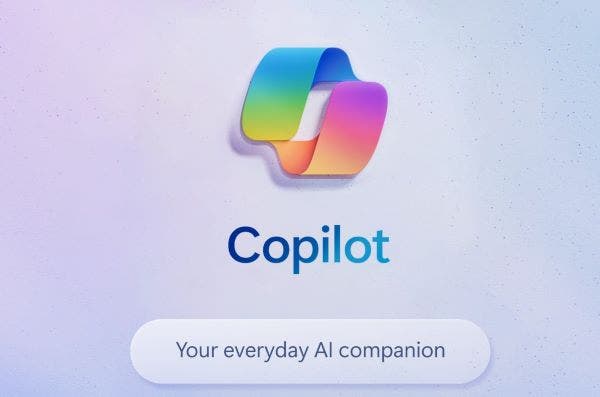Microsoft Q1 2023 Earnings Preview: 7 Things To Know
These are some of the topics analysts are likely to ask Microsoft executives on Tuesday’s quarterly earnings call.

Microsoft 365 Copilot awaits. The revenue and cost potential of generative artificial intelligence. Growth in Microsoft cloud offerings and the continued decline of PCs.
These are some of the topics analysts are likely to ask the executives of Redmond, Wash.-based Microsoft on Tuesday’s quarterly earnings call. Microsoft will report results for the first quarter of its 2024 fiscal year, which started July 1.
[RELATED: Microsoft Q4 Earnings: 7 Big Takeaways]
Microsoft Q1 Results
A recent survey of value-added resellers (VARs) by investment firm KeyBanc showed that the number of VARs reporting Microsoft business meeting or beating expectations increased to 91 percent from 88 percent the prior quarter and 80 percent the quarter before that, giving the firm confidence in Tuesday’s quarterly results.
The number of responders reporting a high interest among customers for generative AI (GenAI) grew from the previous quarter – increasing to 85 percent from 75 percent. No responders reported rolling out GenAI capabilities, however, according to the report.
A recent report from investment firm Morgan Stanley put the productivity and business processes (PBP) segment revenue at $19 billion for the second fiscal quarter, up about 12 percent year over year. PBP includes Office 365 subscriptions, Office on-premises licenses and Dynamics 365.
Morgan Stanley put the PBP segment’s 2024 fiscal year forecast at $77.4 billion, also up about 12 percent year over year.
The firm estimated that Microsoft’s forecast for the intelligent cloud segment – including Azure, SQL Server, Nuance, GitHub and Visual Studio – at $25 billion for the second fiscal quarter, up 16 percent year over year.
Morgan Stanley predicted Microsoft’s 2024 fiscal year forecast will come in at $103 billion, up about 18 percent year over year, according to the firm.
Read on for more expectations during Microsoft’s next quarterly earnings call.

M365 Copilot Looms
Nov. 1 begins general availability for the Microsoft 365 Copilot GenAI offering.
Although investment firm Morgan Stanley doesn’t expect to hear “much validation of the pent-up demand for” M365 Copilot on the earnings call, the firm estimated in a report earlier this month that M365 Copilot can produce about $8.1 billion in revenue for Microsoft near term.
Morgan Stanley factored in the $30 a month price and a 20 percent penetration of the Office 365 installed base of 160 million E3, E5 and business users. The revenue could be larger considering the nearly 400 million Office 365 users once government, nonprofit, education, frontline and other license types are factored in.
Morgan Stanley called Microsoft “best positioned in Software to monetize GenAI across infrastructure & apps.” However, the firm noted that “investors must keep in mind the timing of enterprise adoption cycles in setting expectations for upcoming results.”
In the firm’s conversations with Microsoft partners, it has found “a significantly higher level of interest in Office Copilots from their clients in the 40-50% range – assuming these levels of penetration into the smaller eligible base at the announced pricing would represent a $16-20 billion opportunity,” according to the report.
Morgan Stanley also expects a later version of Copilot with fewer enterprise features for a lower price to entice more users, according to the report.
A recent report from investment firm KeyBanc said Copilot can drive average revenue per user, with customers developing new AI workloads on Azure because customers will demand more infrastructure-as-a-service for GenAI modeling, deployment and inferencing.
KeyBanc is looking for executives on the call to provide updates around other AI offerings including GitHub Copilot and Dynamics Copilot, according to the report.
Microsoft executives have previously said that GenAI revenue will come gradually, especially in the second half of its current fiscal year, according to KeyBanc.

Greater AI Growth
Analysts will likely have plenty of questions about the greater opportunity for Microsoft with AI and GenAI.
Morgan Stanley is bullish on accelerated IT spending in 2024 thanks to GenAI and large language models (LLMs), according to the October report.
A third quarter Morgan Stanley survey of chief information officers (CIOs) resulted in 66 percent of responders “indicating these technologies are directly impacting IT investment priorities” compared to 56 percent in the second quarter and 45 percent in the quarter before that.
Only 11 percent of responders said they “expect to have their first projects in production in 2023,” according to Morgan Stanley.
A September report from Wedbush said that partner conversations indicate that the adoption curve for AI monetization “is happening quicker than expected.”
“So far the feedback from customers/partners has been received well with many enterprises planning/budgeting broader AI projects over the next 6-9 months,” according to Wedbush.
Over the next three years, more than half of the Microsoft installed base will use Copilot functionality, according to Wedbush.
“While AI use cases will build markedly in FY24 its clear FY25 for Redmond remains the true inflection year of AI growth with pricing, beta customers, and use cases all being rolled out over the next 3-6 months,” according to the firm. “We estimate for every $100 of cloud Azure spend with MSFT the last few years there is an incremental $35-$40 of AI spend that now is on the table which changes the game and TAM for Nadella & Co. looking ahead.”
Microsoft’s investments should also result in a benefit for partners, Wedbush said. It predicts “that the cloud and underlying Office 365/Windows ecosystem is going to comprise a bigger and bigger piece of Redmond going forward.”

The Cost Of AI?
Will the cost of GenAI overtake the revenue potential is a likely question from analysts during Tuesday’s call.
The October Morgan Stanley report estimated that Microsoft will spend about $50 billion in fiscal year 2024 on capital expenditures, with $16 billion in AI spending.
A Monday Morgan Stanley report put Microsoft Azure’s gross profit from graphics processing unit (GPU) infrastructure-as a-service (IaaS) at $5 billion by calendar year 2025, less than cloud rival Amazon Web Service’s $13 billion. But, Azure still ranks ahead of Google’s potential $8 billion and Oracle’s $3 billion.
Azure could see $2.2 billion in gross profit in calendar year 2024 and reach $8.7 billion in 2026, according to the report. Morgan Stanley continues to watch for more cloud optimization headwinds, validation on actual GPU allocation shares and medium and long term demand seen in the channel.
Morgan Stanley put the gross margins at about 55 percent today, reaching about 66 percent on average over the next three years, with depreciation, energy and labor among the factors eating into that margin.
The total potential GPU IaaS revenue across Microsoft, Amazon, Google and Oracle is about $40 billion by calendar year 2025, according to Morgan Stanley.
Microsoft Azure could see a $14 billion opportunity, with “($8.8 billion in ‘modeled’ Copilot revenue and $5.6 billion in potential GPU IaaS revenue.” However, cloud rival Amazon Web Services sees the biggest opportunity with $19 billion. Google sees a $13 billion and Oracle sees a $4 billion one by 2025, according to Morgan Stanley.
A September report from investment firm Bernstein estimated “that hyperscalers can generate ~$12K of annual revenue per GPU (A100), from pure compute rental (IaaS)” with potential “to generate much higher revenue.”
The firm said that “offering GPU intensive AI supercomputer as a Server, which is a form of IaaS/PaaS, can be a good business with good margins, but this will require driving operational efficiency even more aggressively; not getting into heavy discounting; and managing supply vs. demand.”
According to the report, “a hyperscaler can reasonably, we estimate, generate ~$1.5/hour/GPU or ~$1,000/month/GPU of revenue for each NVIDIA A100 GPU.” That could even be “a relatively conservative estimate and that at least near term, while demand is exceeding supply, the revenue per GPU could be higher.”
“If Gen AI maintains its momentum then this could be a big leg of growth for revenue and earnings that are not in numbers and not in our Azure TAM (total addressable market) analysis,” according to the report.
The firm points to previous “investor concerns when Microsoft made their aggressive push (and investment cycle) into Azure.” Those concerns “abated as Azure margins improved.” The investment by Amazon, Microsoft, Google and Oracle in AI “is large in dollar terms but compared to the size of the Cloud businesses it is still relatively small,” according to Bernstein.
Even if demand doesn’t meet supply in the next year or two, “the impact will be muted, especially as many of these (hyperscalers) can use the GPUs for internal use.” AI-focused vendors less diversified than the hyperscalers could have more trouble should demand come up short, according to the firm.
The Bernstein report does list out areas of concern for GPUs used for AI. One concern is that GPUs could turn out to have a shorter useful life if “equipment failure rates are higher than expected which we believe is possible given the heat generation issues” and there is a “shorter time to market of newer / faster / more powerful GPUs,” which “could negatively impact the revenue captured per GPU,” according to the report.
An oversupply of these GPUs by hyperscalers, AI startups and cloud companies could also hurt overall revenue. However, it’s possible, according to Bernstein, that the hyperscalers are already “purchasing faster / cheaper servers and not passing the whole savings to their customers.” The reveal of those servers would help margins.
And growing adoption of on-demand consumption could help unit pricing, according to Bernstein, which guessed that early GenAI testing, tuning and grounding is based on usage commitments with discounts.
“As the usage shifts toward leveraging more software (e.g. Microsoft’s Copilot AI development stack), building on pre-built models and the addition of expertise and services the revenue (and margin) will increase which will drive up the revenue (as well as the margins since software has a higher embedded margin as seen with PaaS),” according to the report.

Microsoft Cloud And Azure
In a Thursday report, KeyBanc said that its third quarter VAR survey showed “in-line or better feedback on Azure from a few large channels, including positive commentary on genAI contribution to Azure growth.”
Azure was called the biggest incremental area of Microsoft spending, ahead of Office 365 suite of productivity applications and the Microsoft Teams collaboration app.
However, KeyBanc is still cautious for reasons that include “the ongoing high-rate environment,” concerns expressed by partners of Microsoft business software competitor HubSpot and one large Microsoft partner missing on Office 365 revenue.
Azure should see growth around 26 percent year over year. And Microsoft might forecast a point or two of deceleration for the next quarter, according to multiple firms.
Morgan Stanley’s Tuesday report put Microsoft Cloud growth at about 20 percent year over year to about $31 billion. That growth includes Azure, Office 365 Commercial and Dynamics 365.
KeyBanc said that it expects Azure to see a boost thanks to demand for OpenAI services and AI and GenAI model training, deployment and application development.
The firm saw moderation compared to last quarter in the percent of VAR survey respondents expecting public cloud growth over the next 12 months to be flat or up – down from 94 percent to 87 percent, according to KeyBanc. But it stayed above the prior two quarters results of 81 percent and 84 percent.
As for long-term confidence in cloud, 61 percent of workloads are now expected in cloud, up from 57 percent the previous quarter, according to KeyBanc.
Microsoft’s strategic importance to partners as a vendor also grew – 74 percent of VAR survey responders called Microsoft “an increasingly strategic vendor to their customers” compared to 71 percent the prior quarter.
In the October Morgan Stanley report, the firm said that recent survey results showed that “cloud optimization efforts may be more persistent than” previously indicated, giving Morgan Stanley some caution on near-term cloud revenue.
“Only 3% of CIOs having completed cloud spend rationalization initiatives, lower than we would have expected coming out of our prior Cloud Optimization Global Insight survey,” according to Morgan Stanley.
Still, it agreed with the expected cloud growth of about 26 percent. “We are confident the industry remains on the backside of the optimization curve and look to the ongoing AI ramp and lapping of peak optimization periods as helping to support growth into FY25,” according to Morgan Stanley.

DaaS and Windows
A September Bernstein report said that Microsoft desktop-as-a-service (DaaS) offerings including Windows 365 (W365) and Azure Virtual Desktop (AVD) offers a “substantial revenue lift” to a Windows business that now has the perception of “a roughly stable to slow growing business with the bears concerned about Window’s long term prospect,” especially compared to faster-growth commercial cloud.
The firm estimates that over the next three to five years, “Desktop-as-a-Service could generate an additional $14B to $38B in Azure annual revenue growing over the long term to $75B to $100B in annual revenue. … This is meaningfully incremental to Microsoft Cloud thesis and excluding the upside from AI (which is not yet well modeled) this could increase Azure’s long term revenue opportunity by 50%+.”
The shift of Windows to the cloud can “further stabilize and potentially grow Microsoft’s traditional Windows business,” according to the firm. “In other words, Windows revenue could shift from OEM Windows (which varies based on PC sales) to a more stable and consistent revenue annuity revenue stream and could in fact increase.”
Windows delivered $20.5 billion in fiscal year 2023 and has high margins of more than 60 percent. Windows is about 10 percent of Microsoft’s revenue, according to Bernstein.
What’s more, Microsoft may see an opportunity in desktop-as-a-service with Citrix’s acquisition by private equity and focus on large customers plus VMware’s upcoming Broadcom acquisition, which could result in a large customer focus, according to Bernstein.
“With ~1.4 billion consumer and commercial Windows PCs (see 1.4B Windows PCs) running throughout the world, the opportunity is huge even if Microsoft captures a relatively small percentage,” according to Bernstein.
Microsoft could face competition from the likes of Amazon and its Amazon Workspaces offering and companies such as Workspot, which includes former Citrix employees, according to Bernstein. “This is not going to be a winner take all market.”

Security Business, Security In Products
Microsoft security could be on analyst minds during Tuesday’s call – both in the sense of revenue generated from Microsoft security products but also ongoing questions around how secure are Microsoft products and services that face endless cyber attack attempts by threat actors.
Security as a business opportunity has been key for many MSP businesses. Multiple MSPs have advocated for solution providers to stop using fear of attack to sell security products and services and instead show customers how a better security stack can open up more revenue opportunities with larger clients of their own.
Tuesday’s call could show signs of Microsoft driving this conversation or at least seeing benefits from it.
On security built within Microsoft products and services, the vendor has faced endless criticism from executives at security rivals including Wiz, CrowdStrike, Tenable and SentinelOne.
Since Microsoft’s previous earnings call, it’s disclosed 60,000 emails were stolen from 10 U.S. State Department accounts in the compromise of Microsoft cloud email accounts, and a Microsoft employee accidentally exposed 38 terabytes of private data in a public code repository while working on open-source learning models for AI.
Analysts could have questions for Microsoft executives about these headline-grabbing incidents and criticism from leaders in cybersecurity.

PC Decline Continues
KeyBanc expects Windows original equipment manufacturer (OEM) revenue in line with its estimate of 14 percent decrease year over year, according to the Thursday report. Most firms put the decrease at 11 percent.
Gartner’s PC shipments forecast reported a 9 percent decline year over year, an improvement over the prior quarter’s 16.6 percent decline. This would be the eighth consecutive quarter of PC declines. But “the market is showing signs of having bottomed out and expects to see growth resume in 4Q23,” according to KeyBanc.
International Data Corp. (IDC) put the PC decline at about 8 percent year over year, an improvement over the 13 percent decline last quarter, according to KeyBanc.
Back-to-school helped PC demand as summer ended. And a PC replacement cycle for businesses upgrading to Windows 11, not to mention GenAI capabilities in PCs, should improve demand and growth into 2024, according to KeyBanc.
As for the calendar year 2023, Gartner puts PC growth at a 13.8 percent decline year over year due to “the impact of higher inflation rates and increased interest rates,” which continue “to lower consumer discretionary spend, which has added to the recessionary environment and job losses,” according to KeyBanc. Gartner predicts a 4.9 percent year over year in calendar year 2024.
Morgan Stanley’s Tuesday report predicts a 13 percent decline in Windows OEM revenue for Microsoft.
It predicted Microsoft forecasting for the “more personal computing” segment – which includes gaming, search, news ads, Surface, Windows OEM and PC accessories – second fiscal quarter revenue of $14.3 billion, flat year over year.
For the 2024 fiscal year, Microsoft should forecast $56.5 billion, up 3 percent year over year, according to Morgan Stanley.